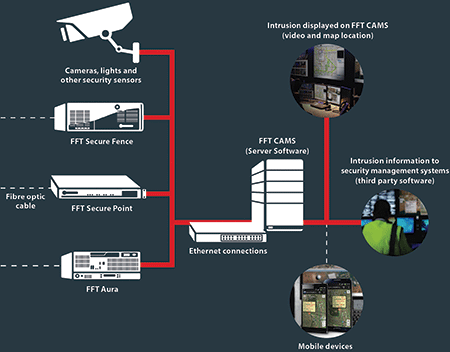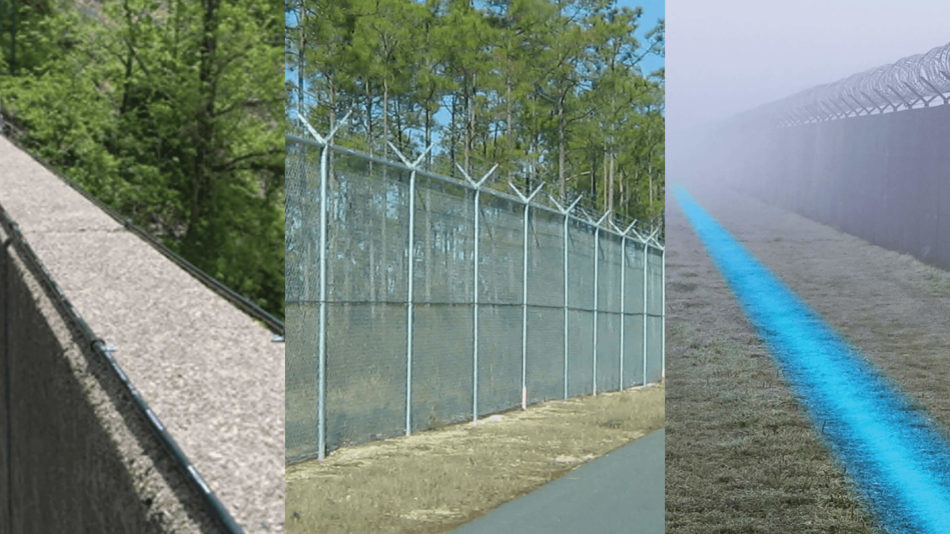Top Reasons a Fiber Security System Outperforms Traditional Security Systems
Why Fiber Optic Protection Solutions Are the Future of Security
The shift to fiber optic safety systems marks a significant advancement in the world of defense, driven by their phenomenal data transmission capacities and resilience to exterior interferences. As the landscape of safety develops together with emerging modern technologies such as AI and IoT, the potential for fiber optics to boost and redefine security infrastructures becomes progressively obvious.
Benefits of Fiber Optic Systems
One of the main benefits of fiber optic systems is their remarkable bandwidth ability, which facilitates the transmission of big quantities of data over cross countries without significant loss. This particular is particularly advantageous for protection applications that need the continuous tracking and transfer of high-def video feeds, sensor data, and various other crucial info. Optical fiber can accommodate the growing needs of modern-day safety and security systems, making certain that information stays undamaged and reputable.
Furthermore, fiber optic wires are much less vulnerable to electromagnetic disturbance, which can be a substantial issue in settings with different electronic devices. This resistance enhances the integrity of the information being transferred, thus lessening the risk of data violations or system failures. Additionally, fiber optic systems are inherently extra safe and secure than standard copper cables, as touching into a fiber optic line without discovery is exceptionally difficult.
The toughness of fiber optic cable televisions likewise contributes to their charm. They are immune to ecological aspects such as wetness and temperature level fluctuations, reducing upkeep costs and boosting system long life. In general, these benefits setting fiber optic systems as a durable and effective option for modern-day security infrastructures, making sure reputable and protected data transmission.
Enhanced Information Transmission Rate

The ability to transfer large amounts of data quickly assists in the smooth assimilation of high-definition video clip feeds and progressed analytics. Protection systems can now process and evaluate info in real-time, enhancing response times and situational awareness. Additionally, fiber optic connections support longer transmission distances without deterioration of signal quality, making them suitable for large security networks.
The raised speed of fiber optic systems not just boosts the performance of safety and security procedures however additionally minimizes latency. This is particularly vital in important scenarios where prompt decision-making can protect against protection breaches or reduce prospective risks. As organizations remain to focus on safety and efficiency, the need for quick and reputable data transmission will unquestionably strengthen fiber optic systems as a foundation of modern protection infrastructure.
Resistance to Disturbance
Fiber optic protection systems consistently demonstrate extraordinary resistance to electromagnetic disturbance, a vital advantage in environments vulnerable to digital noise. Unlike typical copper cords, which can be adversely impacted by magnetic fields, radio regularity interference, and various other kinds of electrical disturbance, fiber optic wires use light to transfer information. This integral property makes sure that the signals stay clear and unchanged, despite bordering digital task.
The use of glass or plastic fibers in fiber optic innovation creates an obstacle versus interference, permitting reputable data transmission also in difficult scenarios such as industrial centers, city locations with high digital website traffic, or places near radio towers. This characteristic significantly decreases the probability of signal destruction or loss, making fiber optic systems particularly ideal for safety and security applications where stability and precision of data are paramount.
Additionally, this resistance to disturbance enhances the general performance and dependability of safety systems, making certain that surveillance and alert systems function perfectly. In a globe where safety is progressively intimidated by advanced modern technologies, the strength of fiber optic systems stands out as a pivotal function, enhancing their standing as a necessary element of modern safety and security framework.
Cost-Effectiveness Gradually
Significant expense savings can be attained in time with the application of fiber optic security systems. While the this hyperlink preliminary investment might appear higher contrasted to standard copper-based systems, the lasting economic advantages emerge with lowered functional and upkeep costs (fiber security). Fiber optic wires are naturally extra sturdy and much less prone to environmental aspects, which converts to reduce replacement and repair work expenditures over their life-span
Additionally, fiber optic systems require much less power to operate, which even more decreases power expenses. Improved information transmission abilities enable less repeaters and amplifiers, lessening devices investment and improving installation procedures. The scalability of these systems likewise adds to cost-effectiveness, as companies can increase their protection facilities without sustaining substantial added expenditures.
An additional aspect to think about is the raised performance in surveillance Continued and action abilities that optical fiber give. Enhanced real-time information transmission can result in quicker case action times, possibly mitigating losses and liabilities related to protection violations. Altogether, the long-term benefits of fiber optic safety systems not only warrant the first expense but additionally place them as a financially prudent option for organizations seeking robust protection services.

Future Advancements in Security
Advancing technologies are set to change protection systems, integrating man-made intelligence (AI) and artificial intelligence to improve danger discovery and feedback capacities. These advancements will allow safety and security systems to examine large quantities of information in real-time, recognizing patterns and abnormalities that indicate potential risks. This positive strategy will certainly enable much faster decision-making and much more reliable incident responses.
In addition, the incorporation of the Internet of Points (IoT) is leading the means for interconnected safety tools, offering detailed surveillance and monitoring. Smart sensors can communicate details regarding environmental changes, while automated signals can alert safety workers promptly of questionable tasks.
Moreover, the development of biometric modern technologies will even more bolster security mechanisms. Facial acknowledgment, fingerprint scanning, and retina identification are ending up being more advanced, offering layers of verification that are tough to bypass.
Conclusion
Finally, fiber optic security systems represent a Going Here considerable advancement in security innovation, using unequaled data transmission speed, resistance to electromagnetic interference, and lasting cost-effectiveness. As the demand for innovative protection remedies proceeds to expand, the assimilation of optical fiber with emerging technologies such as AI, IoT, and biometrics will certainly even more improve safety frameworks (fiber security). The combination of these advancements will make certain an extra protected and responsive environment, solidifying fiber optics as a foundation of future security systems